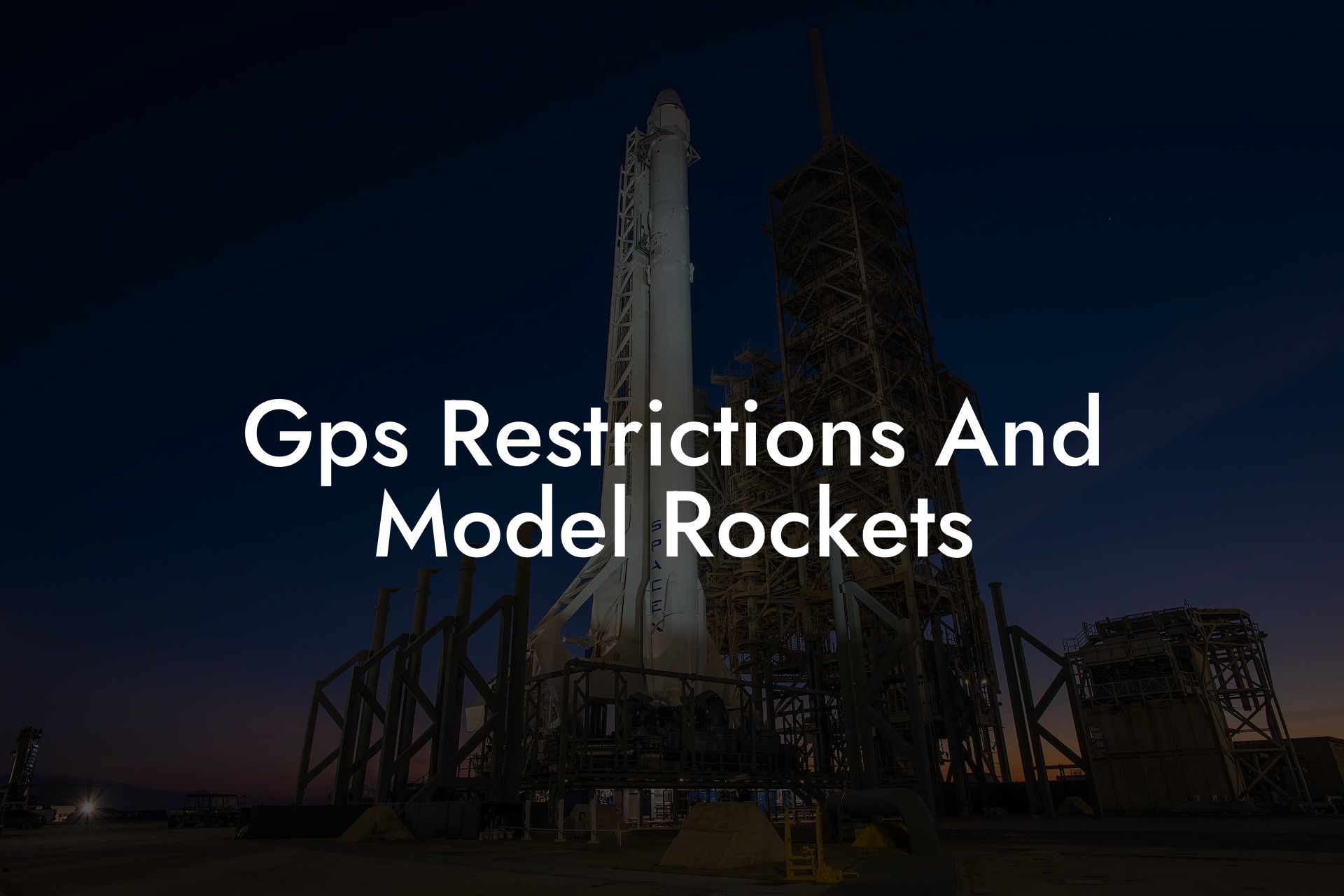Have you ever wondered about the challenges involved with launching model rockets while considering GPS restrictions and regulations? Well, Austin Rockets has got you covered with our comprehensive guide! Discover the ins and outs of GPS restrictions and how they relate to model rocketry enthusiasts like yourself.
Gps Restrictions And Model Rockets Table of Contents
Understanding GPS Restrictions
GPS, short for Global Positioning System, is a satellite-based navigation system used to determine precise location, velocity, and time information. The signals are provided by a constellation of satellites orbiting the Earth at an altitude of approximately 20,200 kilometers. While this technology has revolutionized navigation and positioning capabilities, it is subject to several restrictions to ensure safety and minimize potential risks to the system or the users.
GPS Restrictions in the United States
- CoCom Limits: Coordinating Committee for Multilateral Export Controls (CoCom) was an international organization responsible for controlling the exports of strategic items. Though dissolved in 1994, its guidelines still apply today. CoCom limits for GPS receivers are designed to restrict civilian access to highly accurate positioning information. These limits restrict GPS receivers to an altitude of 18,000 meters (59,055 feet) or a velocity of 1,000 knots (1,852 km/h).
- International Traffic in Arms Regulations (ITAR): ITAR is a set of US government regulations that control the export and import of certain defense-related items, including GPS receivers. ITAR restricts the use of GPS receivers capable of providing precise positional information at high velocities and altitudes, classifying them as defense articles.
- Federal Aviation Administration (FAA) Regulations: The FAA regulates the use of airspace in the United States and has specific requirements for model rocket launches. Model rockets with an onboard GPS must follow FAA regulations, which include filing a notice to airmen (NOTAM) before launch, obtaining a waiver from the FAA for flying above certain altitudes, and restricting launches near airports.
Model Rockets and GPS Restrictions
GPS restrictions can impact model rocket enthusiasts in several ways. While most commercially available model rockets do not fly high enough to be affected by CoCom limits, more advanced, high-altitude rockets could potentially exceed these limits. Furthermore, many hobbyists add GPS systems to their rockets for tracking and recovery purposes, making these restrictions crucial to understand and comply with.
Navigating CoCom Limits with Model Rockets
If you're planning to launch a model rocket capable of exceeding CoCom limits, it is important to be aware of the consequences. The GPS receiver onboard your rocket is likely to stop functioning if it encounters an altitude or velocity breach. Some GPS manufacturers have designed their units to simply cease functioning above 18,000 meters or at velocities greater than 1,000 knots, while others will disable the unit until it falls below the limits again. In either case, losing GPS tracking could greatly hinder your ability to locate and recover your rocket.
Fulfilling FAA Requirements
Launching model rockets, particularly those with onboard GPS systems, requires that you adhere to FAA regulations. Always check for local restrictions and guidelines, as well as the need for waivers and NOTAM filings. Familiarize yourself with the FAA's definitions of high power rockets, which are subject to additional regulations. This knowledge will not only ensure a safe launch experience but also protect you from potential legal repercussions.
Gps Restrictions And Model Rockets Example:
Case Study: A Model Rocket with GPS Tracking
John, a model rocket enthusiast, decided to add a GPS tracking system to his latest high power rocket. He knew he would need to navigate CoCom limits and FAA regulations to have a successful and legal launch. Before launching his rocket, John researched the performance characteristics of his GPS receiver to determine its altitude and velocity limitations. He discovered that the unit would stop providing positional information at an altitude of 17,500 meters, providing a safety buffer below the CoCom limits.
John also checked with his local model rocket club to understand FAA regulations in his area. He filed a NOTAM, applied for and secured the necessary FAA waivers, and ensured his launch site was at a safe distance from airports and restricted airspace.
On the day of the launch, John's rocket successfully reached its peak altitude, and the GPS tracking system allowed him to locate and recover the rocket with ease. By understanding and adhering to GPS restrictions and FAA regulations, John enjoyed a successful and safe model rocket launch.
We hope you found this detailed look at GPS restrictions and its impact on model rockets informative and helpful. The world of model rocketry can be an exciting and rewarding hobby, but it's essential to understand and abide by these limitations to ensure a safe and legal experience. If you enjoyed this article, feel free to share it with fellow rocket enthusiasts and check out other informative guides on Austin Rockets. Remember, knowledge is power – especially when it comes to reaching for the skies with your model rockets!













